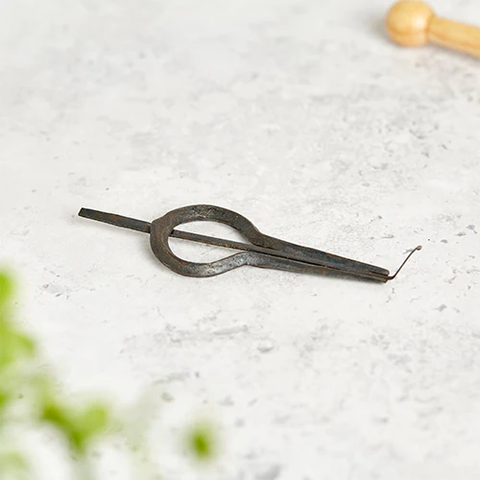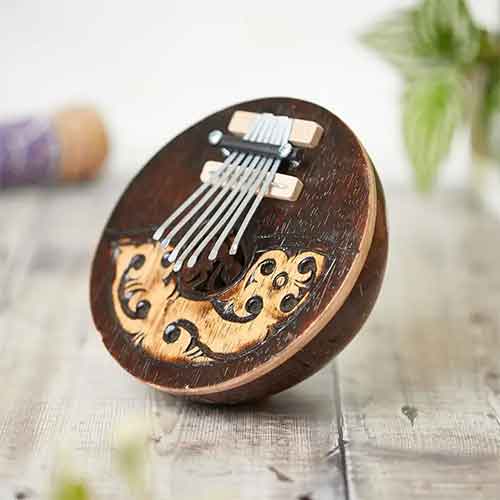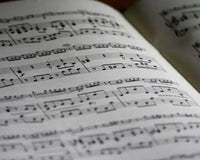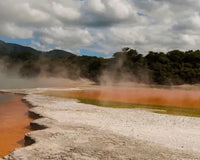The mouth jaw harp, also known as the Jew's harp, mouth harp, Ozark harp, or juice harp, is a whimsical yet profound musical instrument that may seem obscure but is rich in history and culture. This complete guide is tailored just for you, whether you're a curious beginner eager to learn how to play or a music enthusiast looking to delve into the past of this unique instrument. Let's embark on a musical journey to understand its origins, how to play it, and what to consider when purchasing your first mouth jaw harp.
The history of the mouth harp
The mouth jaw harp boasts a history as resonant as its twanging tones. Its beginnings are shrouded in mystery, but evidence suggests that this simple instrument has been a part of various cultures for thousands of years. You might be intrigued to learn that archaeologists have discovered mouth harps made of bone and metal dating back to as early as the 4th millennium BC. These ancient relics were found across the Eurasian landmass, indicating a widespread appreciation for the instrument's distinctive sound and its role in ancient societies' music.
As you trace the history of the mouth jaw harp, you'll find its influence in numerous regions and cultures. In Asia, the instrument is known by many names, such as the "khomus" in Yakutia and "dan moi" in Vietnam. European iterations brought the mouth jaw harp into folk traditions, while in North America, it became associated with the rural life of the Appalachian Mountains. Each culture has shaped the instrument to its musical and aesthetic preferences, creating a fascinating tapestry of designs and playing styles.
Your interest in the mouth jaw harp is part of a broader resurgence in contemporary times. This modest instrument is experiencing a renaissance, with musicians incorporating its unique sound into folk and electronic music genres. The mouth jaw harp has also become a fixture at music festivals, captivating audiences with its ethereal and otherworldly tones. As you immerse yourself in the history of the mouth jaw harp, you become part of a lineage of musicians and enthusiasts who have kept this instrument alive through the centuries.
The origin of the jaw harp
The origin of the mouth jaw harp is as fascinating as its sound. Imagine yourself sifting through the sands of time to find the earliest versions of this instrument. You would discover that while the exact birthplace of the mouth-jaw harp is unknown, it is believed to have simultaneously arisen in several parts of the world. With artifacts from Europe, Asia, and even the Pacific Islands, you can envision how different cultures independently crafted their versions of this musical device from readily available materials.
As you explore where it's from, you'll realize that the mouth jaw harp's widespread historical presence signifies its importance as a tool for entertainment and communication. In Siberia, for example, it was used in shamanic rituals. At the same time, in other parts of Asia, it served as a courting instrument, with suitors serenading their beloved with its melodic twangs. European travelers and traders carried the instrument to new lands, where it was adopted and adapted, reflecting the diverse musical languages of its various new homes.
The instrument is also known as a mouth harp or Jew's harp, though its names and forms vary significantly from one country to another. In Norway, it's called a "munnharpe," while in Italy, it's known as a "scacciapensieri," meaning "thought-dispeller." These myriad names reflect not only the global reach of the mouth jaw harp but also its personal and cultural significance. Each instrument variation is a testament to its adaptability and the universal human love for music.
Jaw Harp Sound Demonstration
The bamboo mouth jaw harp is a traditional folk musical instrument that is made from a solid piece of natural bamboo. These are hand crafted by the indigenous people of Polynesia (located in the sub region of oceania) which is made up of islands surrounding the pacific ocean. To play this instrument you need to place it carefully between your upper and lower jaw consistently tweaking the positioning, volume and altering the breath to make changes to the tone.
How to Play for Beginners
Start by understanding the Jew’s Mouth Harp’s structure: a flexible metal or bamboo tongue attached to a frame. Plucking the tongue makes it vibrate, and changing your mouth cavity’s shape alters the pitch and tone. Hold the frame against your teeth or lips to avoid blocking the tongue’s movement, and gently flick it with your finger.
Refine your technique by incorporating breathing. Inhale and exhale subtly while plucking to create different effects. Experiment with tongue movement, mouth opening, and throat shape to explore a range of sounds. Practice with simple tunes and rhythms to get comfortable with the instrument.
To play, hold the Jew’s Harp with the frame’s ends against your teeth, avoiding contact with the reed. Pluck the reed with a finger while using your oral cavity as a resonator. Control your breath to enrich the sound, and experiment with tongue, cheek, and throat movements to discover diverse tones and melodies.
Buying Guide for Beginners
When you're ready to purchase your first mouth jaw harp, several factors must be considered. Material is one of the most critical factors affecting the sound quality and the instrument's durability. Traditional mouth harps were often made from bamboo or wood, while modern versions are typically constructed from metal alloys. Each material offers a different timbre and playing experience, so try a few before deciding which resonates best with you.
As with any musical instrument, quality and craftsmanship are pivotal. A well-made mouth jaw harp will have a clean finish, a firm frame, and a tongue that's properly aligned and securely attached. When purchasing instruments, seek those made by reputable makers, and don't hesitate to ask for recommendations from experienced players. Investing in a good quality instrument will provide a more enjoyable playing experience and ensure longevity, allowing you to savor the mouth harp's enchanting sound for years to come.
Pricing
You're likely wondering, how much do they cost? Mouth jaw harps can range from very affordable to quite expensive, depending on the design's material, maker, and intricacy. For beginners, plenty of budget-friendly options don't sacrifice quality for cost.
Where to Buy a jaw harp?
Jaw Harp (Frequently Asked Questions)
What is a jaw harp used for?
The Jew's harp is a unique instrument classified as both a wind and percussion instrument. When played, it is placed against the mouth, which serves as a resonator and helps modify the sound. While it is primarily considered a folk instrument, there are higher-quality versions available.
Is jaw harp easy to play?
Playing Jews harps is relatively easy and guaranteed to grab attention at any musical gathering.
How does a jaw harp make sound?
Jaw harps are basic instruments made of a brass or iron frame, resembling a tuning fork, with a steel spring between the tines.
Are jaw harps safe for teeth?
Jaw harps are generally safe for teeth when used properly. However, there is a potential risk of injury if the harp is played too forcefully or if it accidentally hits the teeth. It's essential to use caution and ensure proper technique while playing to minimize the risk of dental damage. If you experience any discomfort or pain while playing a jaw harp, it's advisable to stop and consult with a dentist.
Why is it called a jaw harp?
For centuries in European cultures, this instrument has been called a "Jew's Harp," although its name is believed to have originated from a distortion of "jaw" or the Old English word "gewgaw" for the instrument. Despite little evidence linking it to Jewish people, the name has persisted for centuries.












